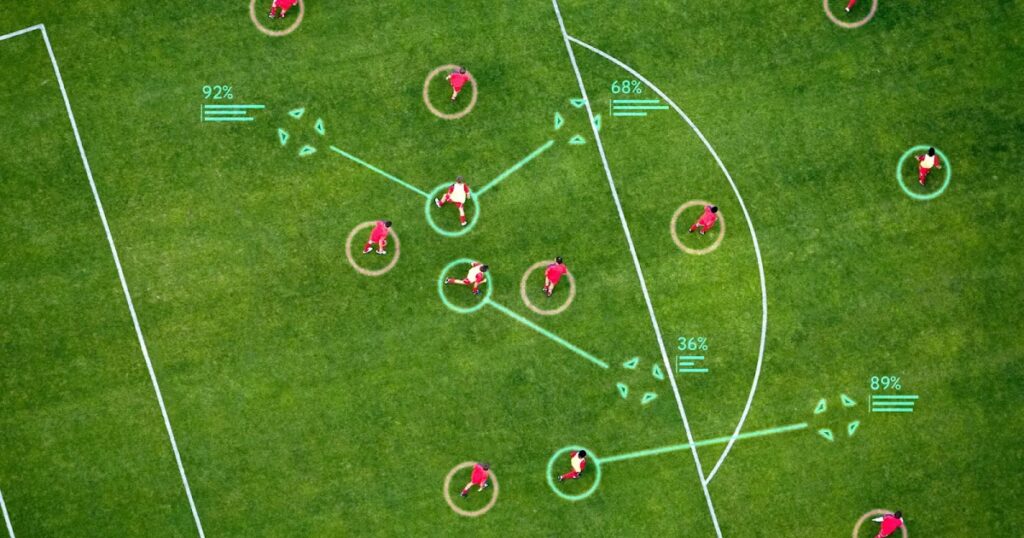The Rise of Data-Driven Football: How AI and Analytics Are Shaping the Future of the Game
October 31, 2024
Football has always been more than just a game—it’s a cultural phenomenon. For decades, intuition, experience, and raw talent were the driving forces behind success. But the landscape has shifted dramatically in recent years, with data and technology now playing a pivotal role in shaping not just how the game is played, but also how it’s understood. This evolution is creating a paradigm where decisions are increasingly data-driven, enhancing meritocracy and inclusivity. I’ve had the privilege of being part of this transformation through Soccerment, and I’ll share some key trends I’m seeing in the industry today.
The Rise of Data-Driven Football
Historically, football data was limited to basic statistics like goals, assists, and possession. Today, with the advent of extensive data collection and advanced technologies such as optical tracking systems, wearables, and AI-powered analytics platforms, teams and analysts have access to more granular data than ever before. Metrics like Expected Goals (xG), Expected Threat (xT), high-intensity running and sprints provide deeper insights into individual and team performance.
These innovations allow sporting directors and coaches to move beyond intuition to more objective decision-making. For example, player scouting or selection is no longer based solely on form or training ground observations but on concrete data about movement efficiency, stamina, and positioning.
How Data is Used and How AI Enters the Equation
Scouting has progressively become more data-driven. Traditional scouting methods relied on established networks, quite a lot of travelling, blocknotes and well-trained eyes and gut feelings. Now, with data tools, clubs are finding hidden gems in leagues all over the world and the processes have become much faster than they used to be. Smaller clubs can compete with larger ones by being more effective in their recruitment strategies. Take the examples of Brighton and Brentford for instance. Now that Gen-AI enters the equation, the speed of scouting processes will further increase, exponentially so.
By analysing historical match data for both the team and their opponents, AI can recommend optimal training sessions, line-ups, and pre-game strategies, while identifying strengths and opponent vulnerabilities. During matches, AI provides real-time insights to adjust tactics, working like an assistant coach. It can also predict opponent strategies by using deep learning to recognize patterns from past games.
One of the major future trends in football analytics will be the integration of event data with tracking data collected through wearable devices or computer vision. This combination can reveal spatio-temporal player dynamics, offering new insights into team performance.
Just as AI revolutionised games like chess and Go with innovative, sometimes counterintuitive strategies, it could do the same for football. AI might suggest tactical approaches that initially seem strange but could evolve the way the game is played, pushing players and coaches to adapt to entirely new strategic landscapes, potentially transforming modern football.
In modern football, players are increasingly monitored through data analysis, both on and off the field. This allows continuous optimization of their training and performance. While this level of data-driven monitoring has been limited to elite football, automated and scalable solutions will soon extend these benefits to non-professional players.
Additionally, AI will assist in personalised nutrition by analysing factors like workload, sleep, and genetic traits, offering precise dietary guidance.
AI also plays a key role in injury prevention and rehabilitation. Machine learning algorithms can analyse training loads and injury history, identifying risk factors and adjusting training to minimise injury risks. For rehabilitation, AI can develop customised recovery plans and assess when a player is ready to return to action. Virtual reality (VR) combined with AI is also becoming a valuable tool in recovery, creating simulated environments for safe training and offering real-time feedback on player movements. This combination of AI and data is revolutionising player performance management in football.
AI as a Support and Not a Replacement
As advanced as AI and data analytics have become, it’s important to remember that they are tools to support, not replace, the human elements of football. Emotional intelligence, on-pitch experience, and the ability to understand players’ personalities will always be irreplaceable factors in talent recruitment, coaching, and match analysis. These human qualities provide context to the data—helping to interpret it in ways that an algorithm cannot. The subtle dynamics within a team, a player’s mental resilience, and the intuitive feel for when to make tactical adjustments are traits that only experienced coaches and scouts can bring to the table. While data-driven insights enhance these decisions, football will always be a sport where emotional intelligence and human judgement remain central to achieving strong results.
Aldo Comi is the CEO and founder of Soccerment, who earlier this month were featured in the next cohort of additions to the prestigious and pioneering MLS Innovation Lab.



